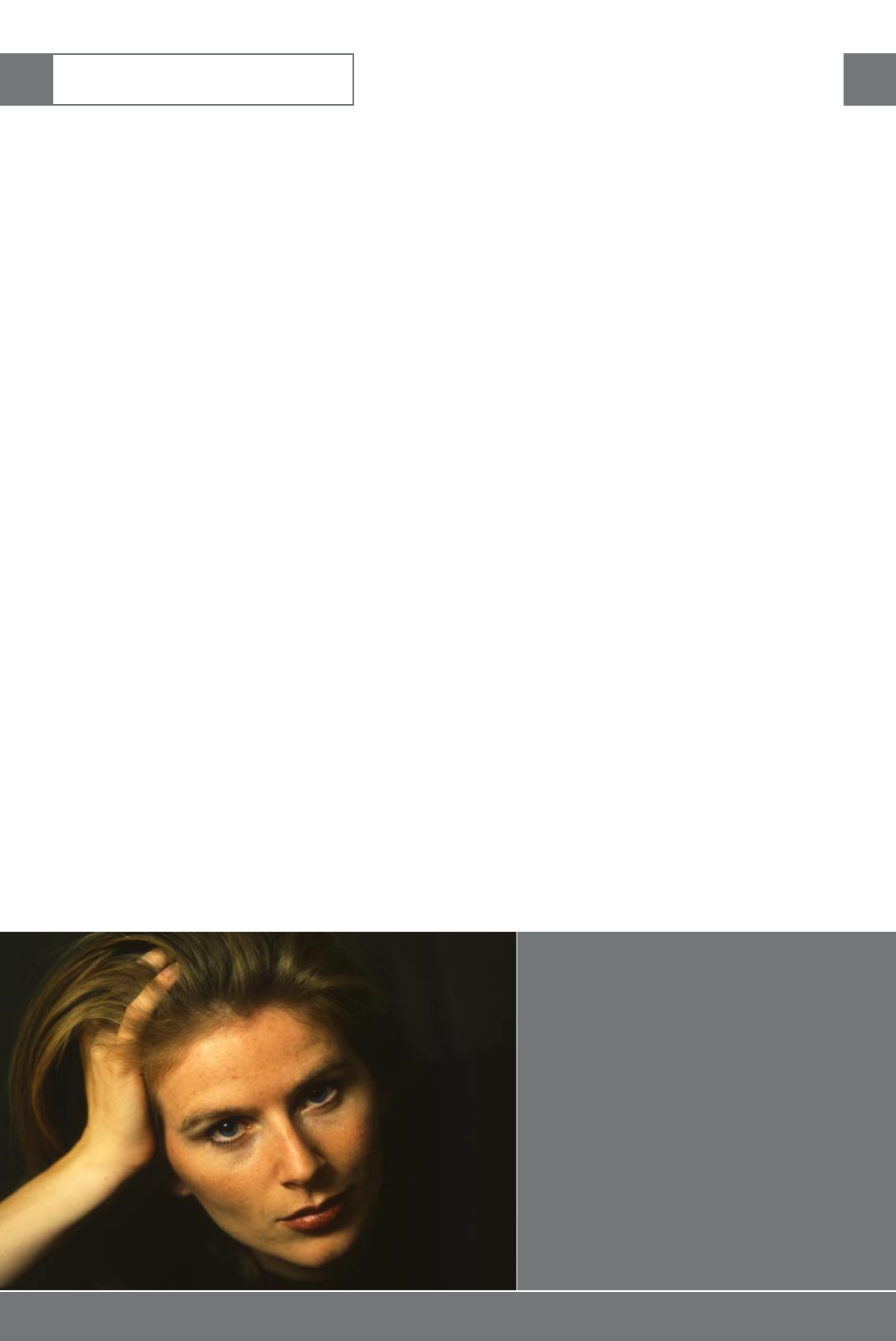
Chapter 3
Leica R-Lenses
4
With these considerations it is possible to create and define the
image effects that you want.
If the main subject is encircled by objects in the fore- and bak-
kground, you can visually emphasize the relationship between
the subjects and even make it appear as threatening, as is the
case with cars that seem to collide. If the photographer needs
the impression of masses, the selection of subject matter beco-
mes important. Pictures at the beach show the piling up of
beach guests and pictures in shopping centers show the mas-
ses of stacked-up buyers.
On the other hand, it is also possible to isolate the subject com-
pletely from the surroundings. Wide open, the depth of field is
quite shallow and by adding light and shapes to the composi-
tion we can create very interesting images. The shallow depth
of field is enhanced by the following phenomenon:
A 180 mm lens has a lateral magnification of 3.6x compared to
a standard lens. The subject is enlarged 3.6 times in its height
and width dimensions. But what happens to the third dimen-
sion: depth? The optical laws tell us that the axial magnification
(the depth) is the square of the lateral magnification. The depth
magnification is now 12.96x. In photographic practice we see
this as an abrupt change in the unsharpness gradient. The cir-
cles of confusion are also enlarged! This effect is not related to
the so-called ‘bo-ke’ effect. Both lenses (180 and 280 mm) have
a somewhat granular unsharpness plane, without destroying
the subject outlines in the out-of-focus areas.
An image point always has a certain extension or radius that
looks like a small circle or disc of light. If the radius is small
enough, the eye will interpret it as a point. The largest circle
that is seen as a point is called the circle of confusion and its
diameter is 0.03 mm on the negative.
The superb performance of the 180 mm f/2.8 Apo-Elmarit-R
permits the unrestricted use of the Macro-Adapter-R. We can
obtain a reproduction ratio of 1:3 with excellent quality. At
these distances there is a reduction of 1.8x in the luminance of
the negative. The automatic exposure programs of Leica R
cameras compensate for this effect, but when you make a
manual exposure, it is wise to take this into account. The occa-
sionally expressed wish for a true macro lens with a focal
length of 200 mm is practically fulfilled with this combination. A
bit outmoded nowadays, but still useful is the Bellows Attach-
ment BR-2 that allows reproduction ratios of 1:3.3 to 1.2:1.
The focal length of the 180 mm f/2.8 Apo-Elmarit-R lens has
more interesting possibilities than is sometimes assumed. The
subject area runs from portrait and children photography to
landscape photography and from theatre- to fashion photogra-
phy and reportage. The ergonomics are excellent, its functions
are very smooth because of internal focusing and a new mount
with ball-bearing rotation.
With an Apo-Extender-R 2x the focal length becomes 360mm.
This is within the range of the 280 mm f/4 Apo-Telyt-R that was
introduced in 1993 and that to this day still delivers the best
image quality of all Leica R lenses, with the possible exception
of the 400 mm f/4 module lens.
This lens has somewhat higher contrast in the center of the
image, but it is not so good at the comers and in the outer zonal
areas. The 280 mm lens however, is usable as a hand-held lens.
You should not be misled by the old rule of thumb that tells you
that the slowest speed for handheld photography is the recipro-
cal of the focal length. When taking pictures with the 280 mm
lens, a shutter speed of 1/250 will often suffice for good quali-
ty images and sometimes even for sharp pictures. If the highest
quality is required, a tripod is a must. With the 280 mm lens,
extremely fine texture details can be captured at longer distan-
ces. A person can be photographed filling the entire negative
area at a distance of 14 meters (46 feet). Perhaps the following
is a more impressive example: with the 280 mm lens you can
capture a 5x7 mm section of a full negative photographed with
a 50 mm lens. This is a very small segment and it is an indica-
tion of the many possibilities of this lens.
LEICA APO-ELMARIT-R 180 mm f/2.8
Picture: Erwin Puts













